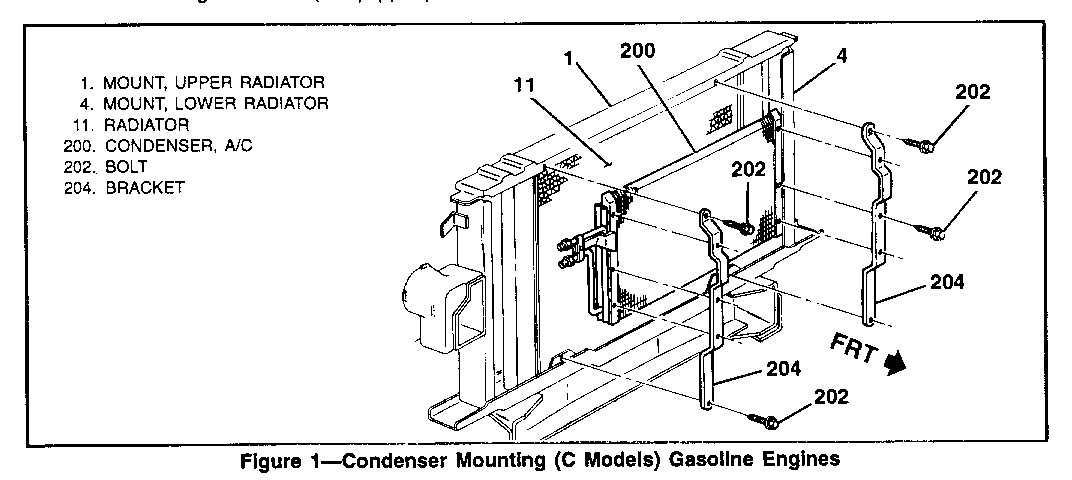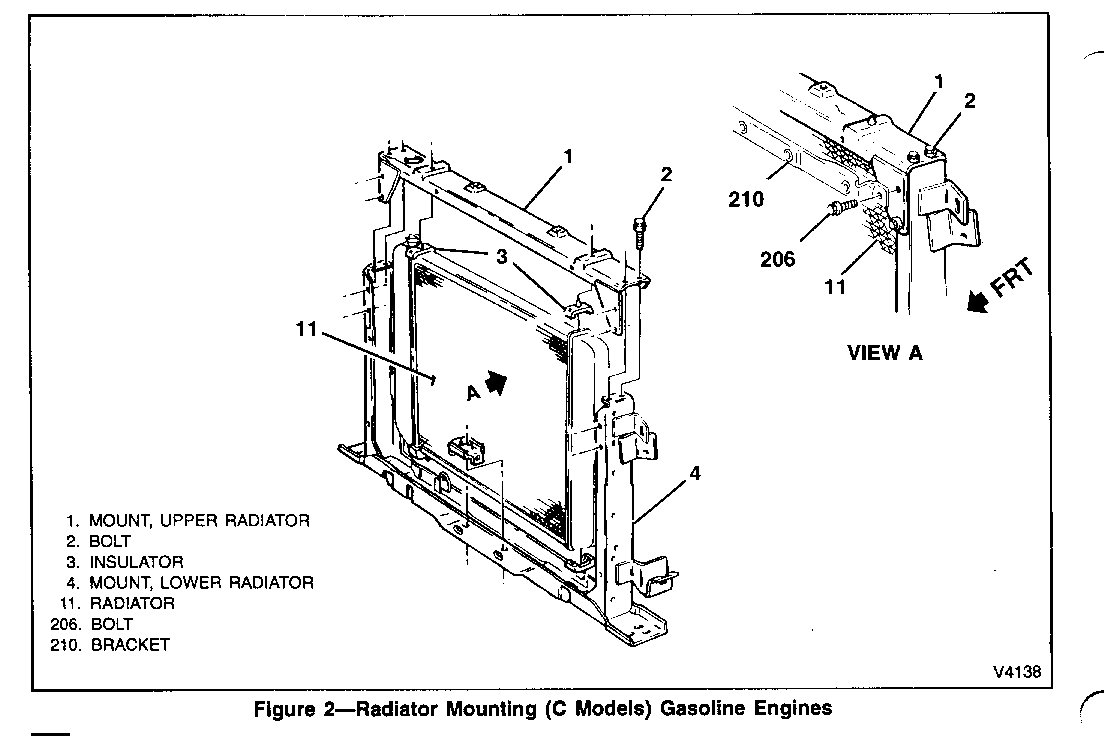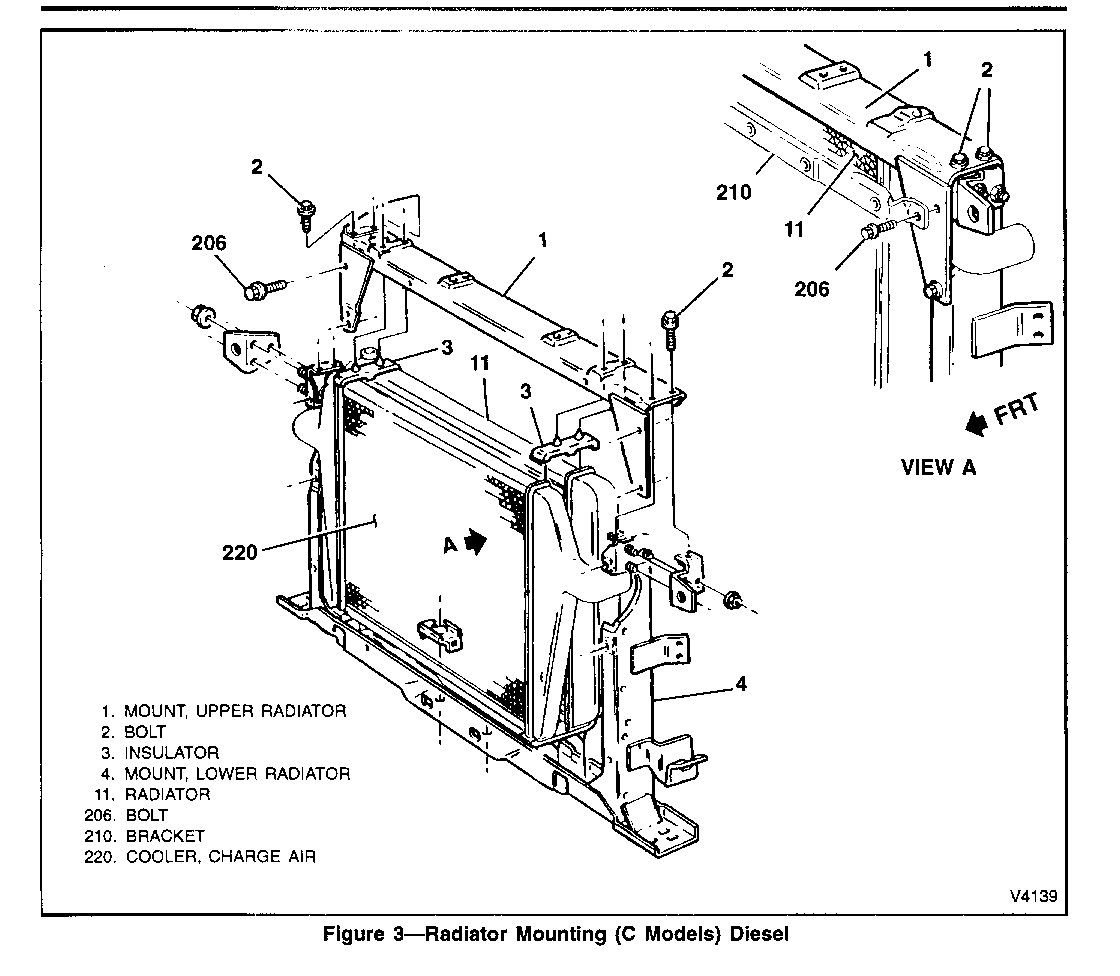SERVICE MANUAL UPDATE SEC 6B2 RADIATOR REMOVAL-A/C CONDENSER

SUBJECT: SERVICE MANUAL UPDATE - SECTION 6B2 RADIATOR REMOVAL DOES NOT REQUIRE A/C CONDENSER REMOVAL
VEHICLES AFFECTED: 1990-93 MEDIUM DUTY "C" MODELS
Please update the radiator removal procedure shown in Section 6B2 with the following procedure.
Remove or Disconnect (Figures 1, 2, and 3)
* Drain the coolant into a suitable container. Refer to SECTION 6Bl.
1. Inner fenders. Refer to SECTION 2B. 2. Upper radiator hose, and clips from the fan shroud. 3. Coolant recovery reservoir. Refer to SECTION 6Bl. 4. Engine and transmission oil cooler lines (if equipped). 5. Lower radiator hose, and heater hoses. Refer to SECTION 6Bl. 6. Power steering oil cooler (if equipped). 7. Fan shroud (position fan shroud rearward). Refer to "Fan Shroud Replacement." 8. Upper A/C condenser retaining strap bolts (202) (figure 1). Note: it is not necessary to disconnect or remove the A/C condenser. 9. Bolts (2) and bolts (206) (if equipped) from the upper radiator support (1). 10. Upper radiator support (1). 11. Radiator (11) by lifting radiator straight up.
CLEAN
* Radiator. Refer to "Radiator Cleaning and Flushing."
INSPECT
* Radiator, hoses, coolant recovery reservoir, and mounting hardware. Refer to "Radiator Checks."
INSTALL OR CONNECT (FIGURES 1, 2, AND 3)
NOTICE: For steps 3 and 4 see "NOTICE" on page 6B2-1. 1 . Radiator (1 1) into vehicle by lowering straight down behind the A/C condenser (200). 2. Upper radiator support (1). 3. Upper radiator support bolts (2) and (206) (if equipped).
TIGHTEN
* Upper radiator support bolts to 25 N.m (18 lbs. ft.). 4. Upper condenser retaining strap bolts (202).
TIGHTEN
* Bolts (202) to 1 0 N.m (89 lbs. in.). 5. Fan shroud. Refer to "Fan Shroud Replacement." 6. Power steering oil cooler (if equipped). 7. Lower radiator hose, and heater hoses. 8. Engine and transmission oil cooler lines (if equipped). Refer to SECTION 6Bl. 9. Coolant recovery reservoir. Refer to SECTION 6Bl. 10. Upper radiator hose, and clips to the fan shroud. Refer to "Fan Shroud Replacement." 11. Inner fenders. Refer to section 2B.
* Fill the cooling system to the proper capacity. Refer to SECTION 6Bl. * Check system for leaks.



General Motors bulletins are intended for use by professional technicians, not a "do-it-yourselfer". They are written to inform those technicians of conditions that may occur on some vehicles, or to provide information that could assist in the proper service of a vehicle. Properly trained technicians have the equipment, tools, safety instructions and know-how to do a job properly and safely. If a condition is described, do not assume that the bulletin applies to your vehicle, or that your vehicle will have that condition. See a General Motors dealer servicing your brand of General Motors vehicle for information on whether your vehicle may benefit from the information.
